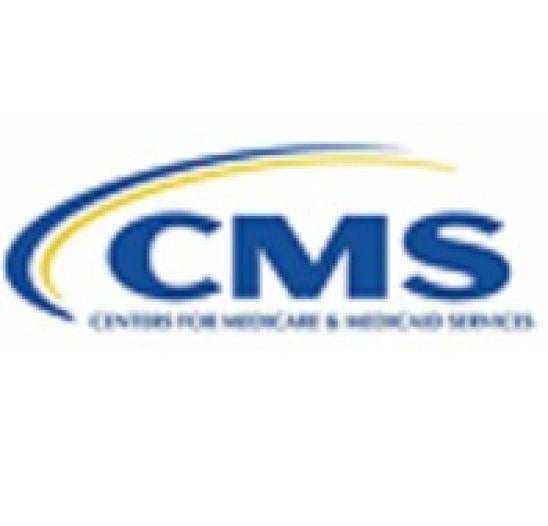On May 3, 2019, CMS published draft guidance regarding space sharing between co-located hospitals and hospitals co-located with other health care entities. This new guidance, published as an addition to Appendix A of the State Operations Manual (“SOM”), offers providers an opportunity to comment by July 2, 2019. Comments should be directed to HospitalSCG@cms.hhs.gov. CMS expects to publish final space sharing guidance following this comment period.
The draft guidance presents a new direction for CMS’ interpretation of space sharing requirements and restrictions, and CMS directly acknowledges this shift:
Please note prior sub-regulatory interpretations prohibited co-location of hospitals with other health care entities. This guidance changes that to ensure safety and accountability without being overly prescriptive.
Executive Summary. CMS’ new space-sharing guidance contains a number of key compliance guidelines for co-located providers. To comply with this guidance, providers should:
-
Shared Common Areas: Ensure that non-hospital patients do not travel through hospital clinical space on their way to non-hospital space.
-
Clear Patient Direction: Ensure that patient pathways are clearly marked, and hospital space is clearly identified, to avoid patient confusion.
-
Shared Staff: Ensure that clinical staff are assigned to only one hospital or health care entity during a specific shift.
-
Contracted Services: Ensure the hospital maintains a complete list and current copies of all hospital service contracts. The hospital’s governing body must maintain full oversight over all contracted services.
-
Emergency Services: Ensure that every hospital location where emergency services are not provided has implemented policies and procedures for the initial appraisal of emergencies and appropriate referral.
-
Survey Readiness: Maintain clear floor plans that identify hospital space, how it is used (the specific services), and any space shared with another hospital or health care entity.
Each of these key takeaways is discussed in greater detail below.
History
Beginning in 2011, the CMS Survey & Certification group sought to publicly define and enforce its interpretation of the concept of space sharing and the prohibitions it placed on co-located hospital facilities — drawing upon a combination of the Medicare Conditions of Participation (“CoP(s)”) for hospitals and the hospital outpatient provider-based regulations. In essence, the original interpretation prohibited hospitals (including provider-based departments) from sharing almost any space with another hospital or another entity. CMS publicly discussed this position in webinar presentations in 2015 and 2016 and embraced it in provider-based attestation denials that slowly became public. While neither the CoPs nor the provider-based regulations address the space sharing concept in any meaningful way, CMS cited to both to support its interpretation and conclusion that shared hallways, reception desks, waiting rooms and a variety of other spaces were not permitted. Sometimes, the interpretation went so far as to require separate entrances, separate elevators, separate restrooms, and even the construction of walls totally bifurcating hospital space from non-hospital space.
This interpretation became part of the standard survey process and review of provider-based attestations (including the review of supporting floor plans), resulting in a number of denials of provider-based status, attempted recoupments, and provider appeals. Despite some provider successes on appeals of these denials, the pervasive nature of this interpretation caused hospitals to incur significant build-out costs to fully separate space and reduce survey and provider-based billing risk. Lawyers and other advisors became experts at reviewing floor plans to recommend structural building changes to reduce these risks. Meanwhile, the modern design of open buildings that fostered patient-centered care delivery models and allowed patients to move easily from a physician office to a hospital outpatient department for imaging, therapy or other services was thwarted in most multi-use buildings.
I. New Draft Guidance – What Is Addressed
CMS intends for this new guidance to permit patient care pathways (literally) that promote patient convenience and flexibility of provider partnerships without compromising patient safety, quality or privacy. Generally, the new guidance appears to offer relief from the most burdensome and costly “separation requirements” that arose from previous CMS interpretations of the CoPs and provider-based regulations. The guidance covers space sharing, staff sharing, contracted services, emergency services, and also discusses how state survey teams should survey for compliance with the new standards.
Space Sharing
The new SOM provisions focus largely on two co-located hospitals, but the new guidance also applies to a hospital outpatient department that is co-located with another health care entity. Though CMS does not directly define “health care entity” for purposes of this guidance, it is broadly described and should be read to include entities that are surveyed independently (e.g., IDTFs, ASCs, rural health clinics) as well as those that are not (e.g., physician offices).
The new guidance clearly limits space-sharing in clinical spaces. The use of the term ‘clinical spaces’ is the crux of the new SOM provisions, and the basis for CMS’ significant departure from its prior space sharing interpretations. Under the draft guidance, a hospital (including provider-based outpatient departments) must have distinct spaces for clinical operations over which it maintains control at all times. The guidance describes these distinct spaces as clinical spaces designated for patient care, including outpatient medical clinics, nursing units (including exam and procedure rooms located in nursing units), laboratories, pharmacies, imaging centers, operating rooms, post anesthesia care units, emergency departments, etc. CMS states that co-mingling patients in a clinical space could pose a risk to infection control, patient safety, patient privacy and confidentiality of medical records.
The key for compliance with this new guidance is to ensure that non-hospital patients do not travel through hospital clinical spaces on their way to non-hospital space.
In a significant departure from its prior interpretation, CMS now suggests that hospitals and their co-located health care entities may share non-clinical spaces and pathways, including:
-
Hallways (as long as the hallways that connect hospital clinical spaces to non-clinical are separated by distinct entrances)
-
Walkways
-
Patient Waiting Rooms
-
Restrooms
-
Reception Desks (as long as there are separate check-in spaces and signage)
-
Staff Lounges
-
Elevators
-
Main Building Entrances
The guidance also requires that public paths of travel (e.g., hallways with distinct entrances to departments such as laboratory, pharmacy, etc.) be well-marked so that the public may know which health care entity is performing services in which department.
Staff Sharing
The new SOM guidance also addresses sharing clinical personnel between co-located hospitals or a hospital and a co-located health care entity. CMS notes that a hospital is independently required to meet CoP staffing requirements and cannot, for example, furnish compliant nursing coverage if the nursing staff is not fully dedicated to the hospital for a specified shift. Essentially, clinical staff may not work at one hospital while on-call for another, float between two hospitals or a hospital and another health care entity, or otherwise furnish services simultaneously to a hospital and another health care entity. This guidance would not apply to physicians who may be on the medical staff of two or more hospitals if they are privileged and credentialed at each.
The key to compliance is to ensure that each clinical staff member, if working at both co-located hospitals or the hospital and a co-located health care entity, is assigned to only one hospital or health care entity during a specific shift.
CMS does not define “shift” in this guidance, but shifts are generally well-defined by hospitals, particularly for nurses and other non-physician clinical staff. Those shifts could be different, however, for a hospital outpatient department.
Contracted Services
CMS states that hospitals may obtain services under arrangements from a co-located hospital or health care entity, and need not notify patients that such services are obtained under contract. CMS considers these services to be provided under the oversight of the hospital’s governing body, and are treated as any other service provider directly by the hospital. The SOM guidance also lists examples of common under arrangements services, including: laboratory, dietary, pharmacy, maintenance, housekeeping, security, food preparation and delivery, fire detection and suppression, medical gases, suction, compressed air and alarm systems.
The key to compliance with the contracted services guidance is to ensure that the hospital maintains a complete list of and maintains current copies of all contracts for services obtained by the hospital. The hospital must also ensure that the governing body maintains full oversight over all services that the hospital obtains through contracts with other entities.
Emergency Services
CMS devotes substantial space to emergency services requirements for a hospital co-located with another hospital or health care entity that does not have its own emergency department. The purpose is to ensure that these hospitals (and hospital departments) have the independent capability, and corresponding policies and procedures, to appraise and perform initial care in an emergency rather than relying on a co-located health care entity to respond. According to CMS, the policies should: (1) identify when a patient is in distress, (2) state how to initiate an emergency response (e.g., calling for staff assistance and the on-call physician), (3) describe how to initiate treatment (e.g., CPR and the use of an Automated External Defibrillator (AED)), and (4) recognize when the patient must be transferred to another facility to receive appropriate treatment. This is an apparent addendum to the existing SOM guidance under the governing body CoP (42 C.F.R. §482.12(f)), which addresses this topic, albeit not specific to co-located facilities.
This guidance does not change a hospital’s obligations under EMTALA when the hospital has an emergency department. It also does not change the provider-based regulations, which differentiate between (i) on-campus outpatient departments and off-campus dedicated emergency departments (requiring compliance with EMTALA), and (ii) other off-campus departments (not requiring compliance with EMTALA). Under the CoPs, however, these other off-campus departments must have the policies and procedures addressed in this guidance and may not comply through an ad hoc contractual arrangement with another co-located hospital or health care entity.
The key to compliance is ensuring that every hospital location where emergency services are not provided (i.e., where EMTALA does not apply), whether off-campus or on-campus and whether co-located with another hospital that provides emergency services, is subject to and has implemented policies and procedures for the appraisal of emergencies and referral when appropriate.
Survey Guidance
Finally, the draft SOM guidance directs surveyors to obtain a floor plan to determine how co-located space is used (and by whom), and a list of all services that a hospital obtains through contracts with others, including the hospital or other health care entity with which it is co-located. The floor plan should delineate which space is used by the hospital and for what services, clearly identifying the locations of both required and optional hospital services. The hospital should make clear the pathways for patients to ensure that non-hospital patients do not travel through hospital clinical space.
CMS is clear that any violations uncovered in the survey process (where there are two surveyed/certified providers involved) would create violations for both providers, and the surveyors should file a complaint regarding the other provider (i.e., the provider not originally the subject of the survey) to ensure a survey process for the second provider. For example, CMS notes that the shared use of clinical space by two or more separate health care entities can potentially lead to non-compliance with the CoPs related to nursing, infection control and patient’s rights under 42 C.F.R. sections 482.13, 482.23 and 482.42.
The key to compliance with a survey related to co-location is to have (1) clear floor plans that identify hospital space and how it is used (the specific services) and any space shared with another hospital or health care entity and how it is used, and (2) a list of and copies of contracts for all services that a hospital obtains under contracts with other entities and where those services are located, as applicable.
II. New Draft Guidance – What Is Not Addressed
Though the guidance addresses a number of core space-sharing and co-location concerns, there are a few topics that CMS left untouched:
-
Lease of Space to Specialty Physicians in Rural Areas: Though CMS personnel have previously raised this as a practice it did not want to discourage, particularly in rural areas, the guidance does not address the concept of leased space within hospital outpatient departments by specialty physicians, for additional flexibility for rural providers more generally.
-
Space-Sharing Restrictions from Other Sources: The guidance is limited to compliance with the hospital CoPs. To the extent space-sharing is restricted under the Medicare regulations for other surveyed and certified providers and suppliers (e.g., ASCs, RHCs, IDTFs). These provisions are not addressed (or superseded) by this guidance.
-
Compliance with the Provider-Based Rules. Nothing in this draft guidance addresses any aspect of the provider-based regulations. But, because the prior CMS space-sharing prohibitions were merely a non-regulatory interpretation of regulations (both provider-based and CoPs) that in no way addressed space sharing, this new “interpretation” of the CoPs should limit continued proliferation of the prior space-sharing interpretation. It is unclear, however, whether and how this new CMS interpretation of the hospital CoPs will be implemented by the MACs and CMS Regional Offices in considering provider-based attestations.
-
Dealing with Prior Denials, Recoupments and Build-Outs. For providers in the middle of appeals related to space sharing issues, this guidance should provide an opportunity for renewed dialogue with CMS regarding the denial, but the guidance does not provide direct encouragement or pathways to do so. To the extent that CMS has recouped payments under the provider-based regulations on the basis of space-sharing “violations” that are permitted under the new guidance, it may be possible for providers to re-visit those results with CMS. Finally, for those providers still in a position to reverse unnecessary build-outs for space separation, discussions with CMS (via the comment process) or with the MACs should be considered.







 i
i


